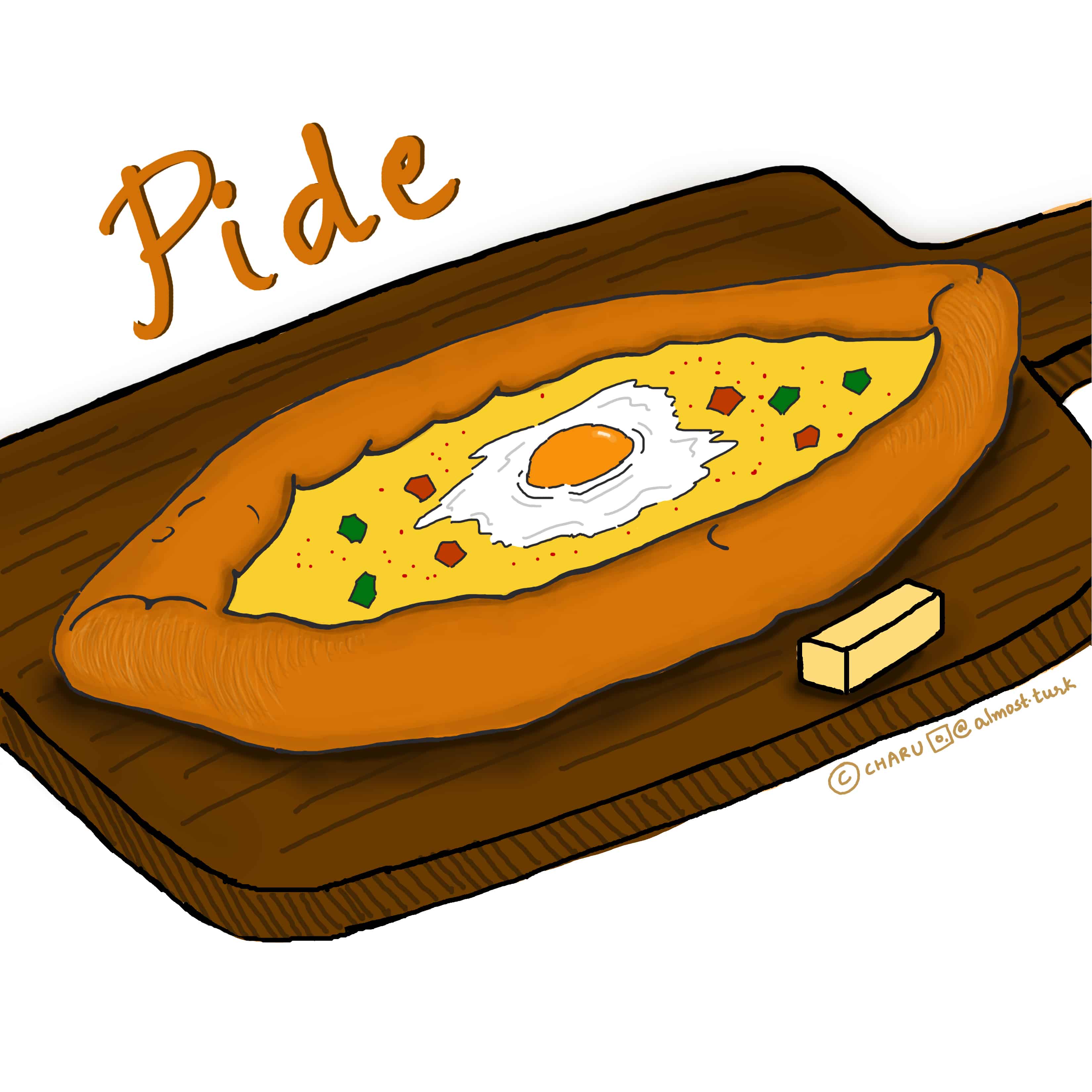Different regions of Turkey are famous for different delicacies. While the Aegean coast is famous for its olive-oil based meze and alcoholic beverage Rakı, the Black Sea Coast is famous for its doughy pide.

Pide is sort of a Turkish cousin of the Italian pizza. It has a flour base with toppings like meat, vegetables, cheese and is baked in an oven. Unlike the pizza which is round, pide traditionally has a long, oval shape with pointed corners; although creative chefs are known to make round and heart-shaped pide too. For our family, just like many families in the Black Sea area, eating pide for lunch is a Sunday tradition.
There are many Pideci (pide stalls) here in Giresun. Since I am not much of a meat fan, I prefer to eat pide with kaşar peyniri, köy Peyniri and maydanoz. The milk-like taste of the cheese perfectly complements the crunch of the crispy crust and the smell of the parsley (maydanoz). My husband on the other hand prefers his pide with kuşbaşılı (diced meat sauteed with tomatoes and bell peppers). Another family favourite is kıymalı pide (minced meat topping).
While most pide are ‘açık’ or open, a few places also serve ‘kapalı’ or closed pide. A closed pide is made by folding the crust over so that none of the toppings are visible. It resembles a calzone more than a pizza. I prefer the open pide because I find them to be crunchier. But if you want the crust to be soft rather than crunchy, you can opt for the closed variety.
If you want to eat pide like a pro, you should order one with an egg on top. As soon as a pide is taken out of the oven, an egg is cracked on it. The heat of the pide is enough to cook the egg to a runny consistency. When the pide is served, you can dip the pointy crust part of the pide in the runny egg and enjoy some yummy goodness. I eat the outer ends of my pide first, that way I can eat the driest parts of the crust with the most amount of egg. (Believe me – strategic use of the egg is very important). In my opinion, any yabangee should not miss this experience.
The best, most authentic pide come out of wood-fired ovens and are often served on wooden boards. While eating your pide don’t forget to sprinkle a pinch of pul-biber on top and order some ayran to drink. And be careful, pide portions in the Black-Sea cities can be huge, so you may want to order a küçük (small) or yarım (half) portion.
If what you have read so far has made you crave for pide, I would suggest jump on an airplane to Ordu – Giresun right away. So that you can enjoy your pide in the way it’s supposed to be enjoyed – in a small open-air restaurant by the sea side. If you are in Istanbul and not keen on traveling at the moment, you can check out Nelipide on Bağdat Caddesi. I am sure there are many other good pideci in Istanbul, but these are the ones I have tried.
If you would like to stock-up on pide just like I do, you can check out your local supermarket. I have seen frozen pide being sold in Migros and Bim. But please don’t have high expectations from the frozen pide – they are just a back-up plan.
So this is all the pide knowledge I have. Do you know a pideci I should check-out? Do you have any favourite toppings? Anything else which can add to the whole pid-experience? Do let me know through your comments.
Until then, Afiyet Olsun!
This article was originally published on March 30, 2018, by Charu Wadhawan.









